Effects of Framing, Lighting and Angles on the Film Casablanca
| ✅ Paper Type: Free Essay | ✅ Subject: Film Studies |
| ✅ Wordcount: 4824 words | ✅ Published: 23rd Sep 2019 |
An Analysis of the Effects of Framing, Lighting and Angles on the Film Casablanca
Introduction
The primary purpose of this extended essay is to analyze the role of filmic techniques of framing, lighting and angles on the romantic classic Casablanca and to reveal relevant insights that may not have been apparent prior to this analysis. Much in-depth analysis will also go into the nature of black and white films, romantic drama films, as well as certain themes specific to the plot line of the work such as lost love and isolation in addition to betrayal. This analysis will specifically revolve around the role played by the aforementioned concepts. The first section of the essay details the background context of the film in terms of the time period in which it was produced as well as the specifics on its release. The second and largest main portion of this essay is used to explain the cinematography behind the film in relation to the themes and motifs in and outside the movie. This section will also include three subsections designated to each of the three filmic components. In the final part, or in other words the conclusion, the research concludes that the filmic techniques of lighting, framing and angles in the movie Casablanca play a fairly significant role not only in the development of the plot line but also in the subtle reflection of the relevant time period.
Summary of the film Casablanca
The film Casablanca mainly tells the story of a man by the name of Rick Blaine; he is torn between following his personal desires and the desires of the one he loves, a woman by the name of Ilsa Petrovich. The dilemma is that he has to make a tough choice. He can either decide to be with the love of his life and follow his own heart and selfish desires, or do as she wishes and help her spouse flee the Moroccan city, Casablanca, so that he is able to proceed with his battle against the Nazis. Rick owns a nightclub in the city of Casablanca called “Rick’s Café Américain”. During the second World War, Rick’s café acted as a home for all the refugees who were trying to flee to America to escape the war. They were to obtain illegal letters in order to escape. Shockingly, one day, Rick came across his long-lost love at the café with her husband, the well-known rebel Victor Laszlo. After seeing and conversing with Ilsa, Rick immediately falls back into a depression. However, over the course of the several days that Ilsa and Victor are in Casablanca, Ilsa begins to love Rick again and wants to stay with him in Casablanca; though despite the rekindling of their romance, she is also torn between decisions, as she also wants Victor to escape to America. So in the end, she lets Rick decide, and by the last scene of the film, it is safe to say that some sacrifices are made for the sake of love despite all losses of the past.
Larger Context
The significance of the role of Casablanca in the second World War disappoints neither the fact that it became the setting for a classic WWII romance film, nor the idea that its name was made the title of this film. At the time, the reason for the popularity of the name ‘Casablanca’ was directly connected to the WWII event in which Operation Torch took place; The Britons and Americans invaded French North Africa, which included the city, and took over during the North African campaign. Moreover, Casablanca proved its importance when it acted as an important strategic port[1] during the war, being the site of a large American air base as well as the place at which the Casablanca Conference was held, in which notorious wartime leaders and officials Winston Churchill and Franklin D. Roosevelt met and discussed the progress of the war. All in all, Casablanca was crucial to the overall second World War II and knowing this fact, the Warner Bros Studio took advantage of the city’s popularity in naming the new romantic drama after the beloved location. And thus, Casablanca was born — or more technically, identified.
Evolution
For a 1940s black and white film, Casablanca was quite well-received with its relatively big budget of $1 million and even bigger box office of $4 million[2]. Despite its first release in the year of 1942 being termed a “limited premiere” in the city of New York, the work eventually reached a much larger audience in the following year, 1943, when it was played nationally[3]. As for barriers and complications, the movie had its fair share of them. The most prominent one was likely that its first audiences were people caught in the second World War as it was drawing to a definitive end. However, simply due to the fact that the war was soon over after its release, the film received much more undivided attention and praise a little while after its monumental day. It won a grand total of three academy awards in the subsequent categories of best picture, screenplay and best director and had a final box office of four million dollars. Consequently, notwithstanding initial conflict, director Michael Curtiz ensured that the production of Casablanca overcame major obstacles to come through as one of the most acclaimed historical romance films of all time with an astonishing record (for the time period) of three academy awards, one of which was the award for best director that went to Curtiz himself[4].
Get Help With Your Essay
If you need assistance with writing your essay, our professional essay writing service is here to help!
Find out more about our Essay Writing Service
In terms of overall effect on the audience, the evolution of the Casablanca must be analyzed in the light of the evolution of audience desires in terms of filmic entertainment. Sure enough, this relates to the nature of the film itself in the context of the three main filmic techniques in this analysis, and is a topic to be analyzed in depth.
Summary of Points of Analysis
Starting from the beginning scenes of Casablanca, there appears to be a fascinating usage of the filmic techniques of lighting, framing and shot angles. The choice of using black and white filming technique still remains to this day, however rare it may be[5]. However, unlike the way it is today, the filming of Casablanca was not given the luxury of this choice, which is a defining feature of its individuality. In addition to this component, the lighting throughout the film is very much varied, evoking different emotional responses or a lack of them from the audience. It can also be said that it is because of the aforementioned feature of a black and white scheme that the producers of Casablanca made extensive as well as witty use of many distinctive hues from the two colors. Furthermore, the film makes clever use of a variety of shot angles, including aerial, high and low angled and close-up ones all incorporated to portray a variety of themes and emotions, among other ideas relevant to the work and time period. Specifically in the realm of filmic angles, this work appears to make abundant use of brisk scene transitions; it is almost as if the producers intended to emulate, in this piece, the mood from the actual war, which as a whole was most probably not very calm.
Analysis Through the Filmic Techniques
Lighting
Due to the nature of colorless visual works, it can be said that the importance of lighting and shadows are amplified many times over in the case of Casablanca. Since the audience does not receive the luxury and sensation of numerous distinct colors, an alternative is thus required on the part of the filmmakers. And with that, an analysis of filmic lighting comes into play.
Immediately following the opening credits, the screen is engulfed by a planet Earth nearly as black as charcoal[6]. Paired with the music in this initial image, the light or lack thereof helps to establish the mood of the entire film. It can be said that this portrayal foreshadows the coming chaos and solemnity of later scenes such as when Ilsa abruptly abandons Rick upon receiving news of her husband being alive, or in more general terms, the majority of the encounters between Ilsa and Rick as they do not even end up together at the very end.
As for a specific analysis tied to the nature of black and white films, the flashback in which Sam gives Ilsa’s letter to Rick is one that cannot easily be forgotten. With the rain that day, the ink on the paper was already smudged by the time Rick read the message. Despite the obvious indication that the writing and smudges were both in and of ink with the help of a key light, the nature of colorless shots allows for the imaginations of the audience to take them away. The color of blood in a black and white film is so dark that it might as well be the color of tar or ink. Thus, smudges of blood on the paper could indicate the physical pain on both sides for the separation.
Perhaps the best example of emotional appeal to an audience on the part of Casablanca is the singing of the patriotic French anthem “Marseillaise” as the mother of film critic J. Hoberman witnessed people standing up during that scene to sing along in a public theater[7]. Thus, this sort of patriotic involvement on the part of this film really goes a long way in appeal to audiences. However, with specific ties to lighting, there is appreciation to include. During a later visit to Rick’s bar, Ilsa’s husband, Victor Laszlo spontaneously gets the band to start playing a French anthem by the name of “Marseillaise”. What is interesting to note here though is not anything that Laszlo did, but how he was physically portrayed during the song. Although he wasn’t in the center of the frame, he was nonetheless the first one the audience would notice because of the lighting shining on him, known as a key light. Moreover, this light was not anything like a single spotlight as it did not shine from above, but it lit up Laszlo’s entire figure[8] and only his figure to make him stand out amongst the singing crowd as a major character. The theme of isolation pops up in this context, but unlike more common instances, this time it is with a positive connotation.
As a dynamic character, Ilsa Petrovich is one for which the filmic technique of lighting plays a great role. Most of the shots were taken from her left side with a catch of the light, so that her eyes could look like they were shining. For example, following the instance where she first enters the bar, Ilsa practically begs Sam, the pianist and one of Rick’s closest friends, to play a song she and Rick used to love: ‘As Time Goes By’[9]. As she pleads with him after he refuses the initial request, one can make out small but vividly apparent balls of light in her eyes. If one thinks about ‘shining’ eyes perhaps one may think of emotions such as excitement or sincerity, and there is nothing incorrect in that connection. However, for this specific instance and others similar to it throughout the film, Ilsa’s eyes could be seen as ‘shining’ with tears – just not actual tears. It is possible that the filmmakers intended to subtly incorporate this idea to exhibit the filmic theme of lost love. Ilsa lost a loved one through her action of leaving Rick behind in Paris. Despite her desire and eventual decision to reunite with her husband, or in other words her first love, she indeed loved Rick at one point in time, and there is pain associated with the loss of any loved one regardless of whether the love is that of the past or present.
The gown that Ilsa wears in a shot within Rick’s flashback[10] can be noted in close comparison to the portrayal of her eyes: shiny with the correct use of lighting in the scene. Interestingly enough, since this is an instance found in a flashback from when Rick and Ilsa were still together, it could in no way directly result from the point where she deserted him, but it could be of no doubt an occasion of foreshadowing the feelings resulting from lost love the both of them were about to experience.
In contrast to the light with which Ilsa was portrayed, spots of shade and darkness added in connections to several other characters, major and minor, were indicative of isolation, another theme inherent in Casablanca. The clearest example of this is perhaps the instance in which Rick sits down with a drink after closing hours[11], without the ability to stop thinking about his encounter with Ilsa after such a long time. Shortly after this shot, flashbacks follow suit. There is a hazy transition to and from the flashback that emphasizes the mindset with which Rick recalls his past with Ilsa: drunkenness paired with a sense of longing. More importantly, the flashback as a whole is the primary component in the overall plot that aids the audience in understanding the entire backstory of why Rick reacted the way he did at the sight of Ilsa in his bar. Moreover, the theme of betrayal is illustrated quite vividly in those memories initially of bliss but then of pain, unexpected and raw. The wide variety of different lighting equipment, shadows and shades used in the film were all of a classic nature in consideration of black and white films. Moreover, the way of applying the background surroundings as a frame of the various scenes made the film seem more professional, which leads the analysis to the next topic of discussion: framing.
Framing
The idea of framing is a simple one. A frame limits a picture to four borders[12]. Thus, it is crucial for filmmakers to choose carefully when deciding what to incorporate into a certain shot or scene. Moreover, the various decisions made in Casablanca make the filmic technique of framing one that it quite essential to examine.
The opening scene is portrayed as one of utter chaos. With a combination of rapid moving shots and abrupt frame changes, the disorderliness of this segment is highlighted through the filmic technique of framing. Moreover, this idea emphasized the wartime period in which everyday life was unpredictable, as depicted in the arrests of several European refugees who failed to show the correct paperwork[13]. This recurring filmic motif of quick scene exchanges is made apparent as the movie plays on, and it can be said that this feature helps the overall movie adhere to the larger context in terms of time period: World War II. In a way, one could draw the conclusion that historical accuracy, in this case, is maintained through sensational experience rather than how it usually is: through cold hard facts. Credibility of the work is thus increased and the overall effect of the movie is heightened in a positive manner.
Shot Angles
The first notable shot is an aerial one, or in other words, a bird’s eye view shot. It commences as an overlook on a fairly big portion of the city, with the majority of the picture consisting of sizable buildings. It then swiftly narrows the shot in to focus on a certain market square. The speed yet rough manner in which scenes change in the context of this specific film seem to play quite a significant role in the feelings evoked within the minds of the audience. It increases the intensity of scenes such as the various arrests made throughout the storyline as seen earlier in this analysis. More specific than shot angles would be the importance of movement technique throughout the length of Casablanca.
At the start of the movie, there is a scene that starts right after the news of two German messengers who are killed while in the process of carrying letters of transfer, the MacGuffin of the story, with the goal of escaping Casablanca. One is able to see how the police arrests some suspicious characters on the street. One of those people was a man who had papers but they were not in order. Thus, he tried to escape from the police, but was shot and killed right away. The motif of chaos preceding serenity is apparent in this minor case reflecting bigger occasions such as how following the chaos in his heart upon receiving Ilsa’s letter, Rick had finally been getting some peace as the memories of her had started to fade.
Going back to the relatively minor scene, however, another notion becomes clear. It is seen that a police officer bends down to the corpse to look at the papers that were clenched in his hands, then passes them to the other police officer and also closer to the camera so that audience can see. The papers showed that the man was a free France propaganda. One can notice how the camera had a close-up to the police officer’s hand when he was holding the papers. The papers were also at an angle with the camera, where the police could not see them as well as the audience could. That scene indicates how important it is to keep in mind the relation between the characters in the movie and the film viewers, who are watching the movie. The audience members are the most important ones in this case with their control of how the piece affects them individually. This connects back the idea of evolution in parallel terms of the movie as well as shifting consumer wants in the film industry. It it thus safe to say that the brilliant reception of Casablanca was in part due to the individuality with which each audience member could watch and understand the movie in similar and different ways through the careful considerations made by the producers.
Another scene in Casablanca demonstrates Rick’s Café Américain. The shot initially shows the café as a whole. Then, the shot transfers to be directed towards only the people who are in the café talking about fleeing Europe. Next, the image goes to a lady asking about Rick. After that, a man goes up to Rick asking him to sign a blank check, then the camera takes a closer shot at Rick while he is signing the check and then another closer shot at Rick himself. This gradual transition from scene to scene until the camera finally settles on the key part of the exposition is one that is widely used in many stories told through both digital and print means. There is a sense of suspense built all the way up to the point when the key instance is revealed, but the suspense is very different from that of a horror movie or even an action-packed piece. This shot emphasizes that Rick is indeed the central character in the film as well as the owner of the café. Furthermore, it is nothing short of vivid in its portrayal for the goal of helping the audience in understanding certain points of the movie in which words do not necessarily need to be used. This continues the idea in the previous paragraph of Casablanca being a film that evolved with the changing demands of buyers in the audiovisual entertainment marketplace.
In one of the scenes right after the flash from the past of Paris, Ilsa returns to talk with Rick following her first to his bar with her husband, or in other words, the man she left him for. The following shot of the movie had a brief right to left camera movement from the image of Rick’s face to the image of his hands, where they were tipping above the glass. The next shot was also a camera movement but here it was from the left side to the right side, where the camera was following the small walk to the right border of the frame of Sam. Then, in the middle of that shot there was an open space between Sam and Rick. The set of this scene had a door that was framed by the vaulted roof, or more specifically, a double aperture framing. After that, the director prepares the audience with a visual staging when Ilsa enters the room. Immediately before she enters, the shot was on the object that was centered in front of Rick, which was the bottle; he removes the bottle to pour a drink for himself, thus allowing for a clear view of the entrance[14]. In this scene, the aim of the director of the movie was to transfer the audience attention to the entrance of the other main character, Ilsa. Following a logical way of laying information out in the story, more lengths are usually taken to introduce the presence of major characters. Then, with some soft music in background, Rick and Sam look at the door as the shot turns dark and gloomy immediately before Ilsa enters. After she has entered, the lighting stresses how she is enclosed in the room with the door[15]. This point refers to the aforementioned theme of isolation because apart from being isolated by oneself, it is also possible to be in isolation with other people. In this instance, Ilsa is thrown into isolation with Rick and Sam through the closing of the door, as well as the change in lighting as a result of it.
Conclusion
In summary, the major filmic techniques of lighting, framing and shooting angles in addition to actor and camera movement technique played quite substantial roles in not only the development of the plot line Casablanca, but also the connection of the work to the time period in which it was produced. Lighting and specifically black and white film highlighted the time period as well as its limitations in terms of providing audiences with an intriguing experience. Moreover, the varied types of framing present throughout the story put much emphasis on certain points made and plot details expressed. In a way, it substantially boosted the audience’s comprehension of the piece as a whole. Finally, the shot angles, with a specific star on movement technique, helped to clearly convey the larger context of the film in addition to evoking certain emotional responses among viewers.
3687 words
Appendix
Image 1
(Casablanca, 1942, 1:11)
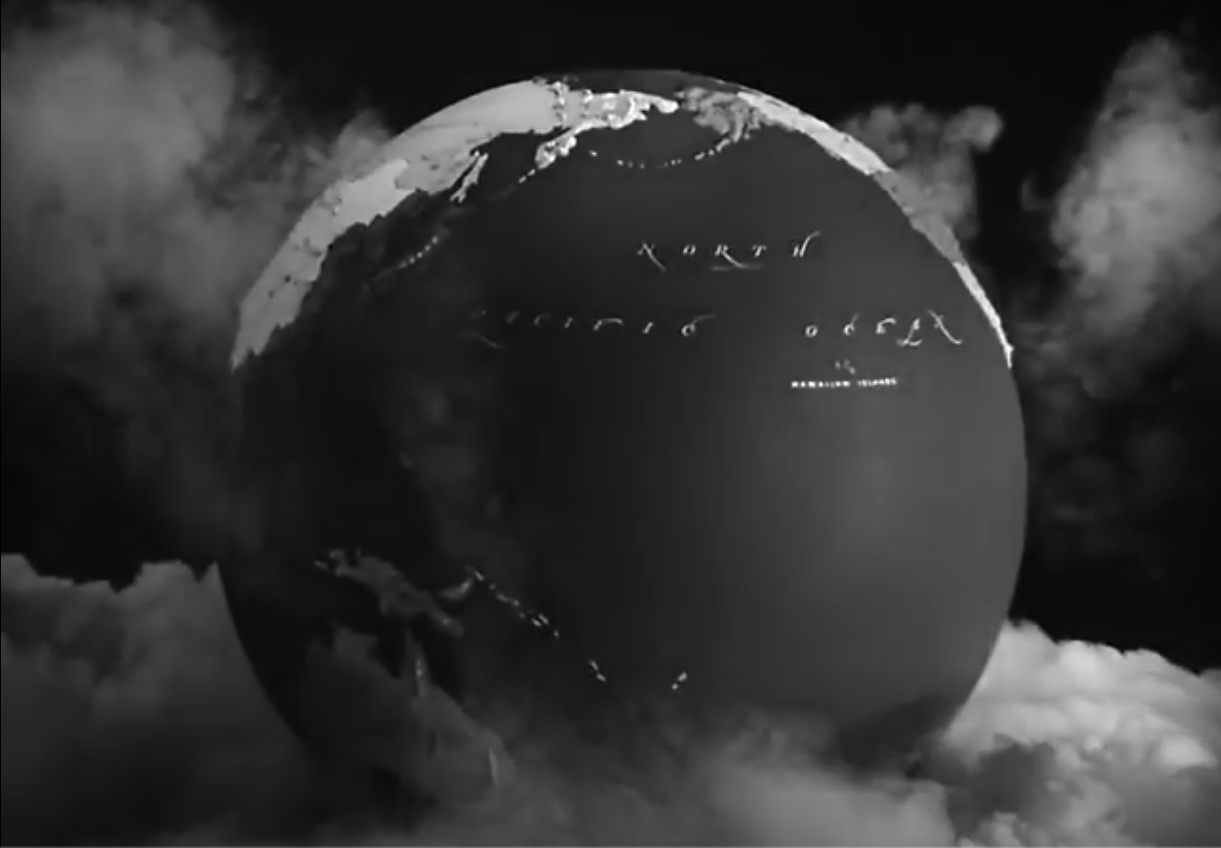
Image 2
(Casablanca, 1942, 3:03)
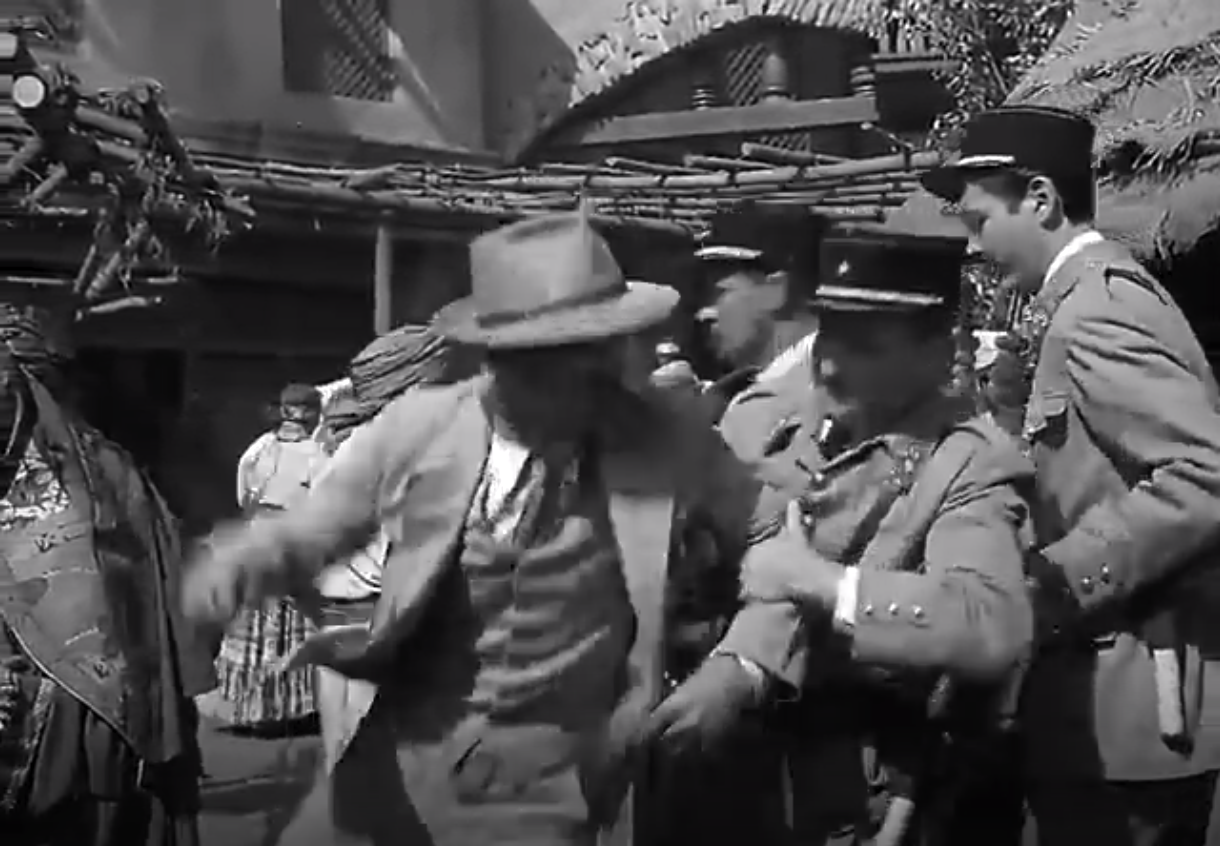
Image 3
(Casablanca, 1942, 32:20)
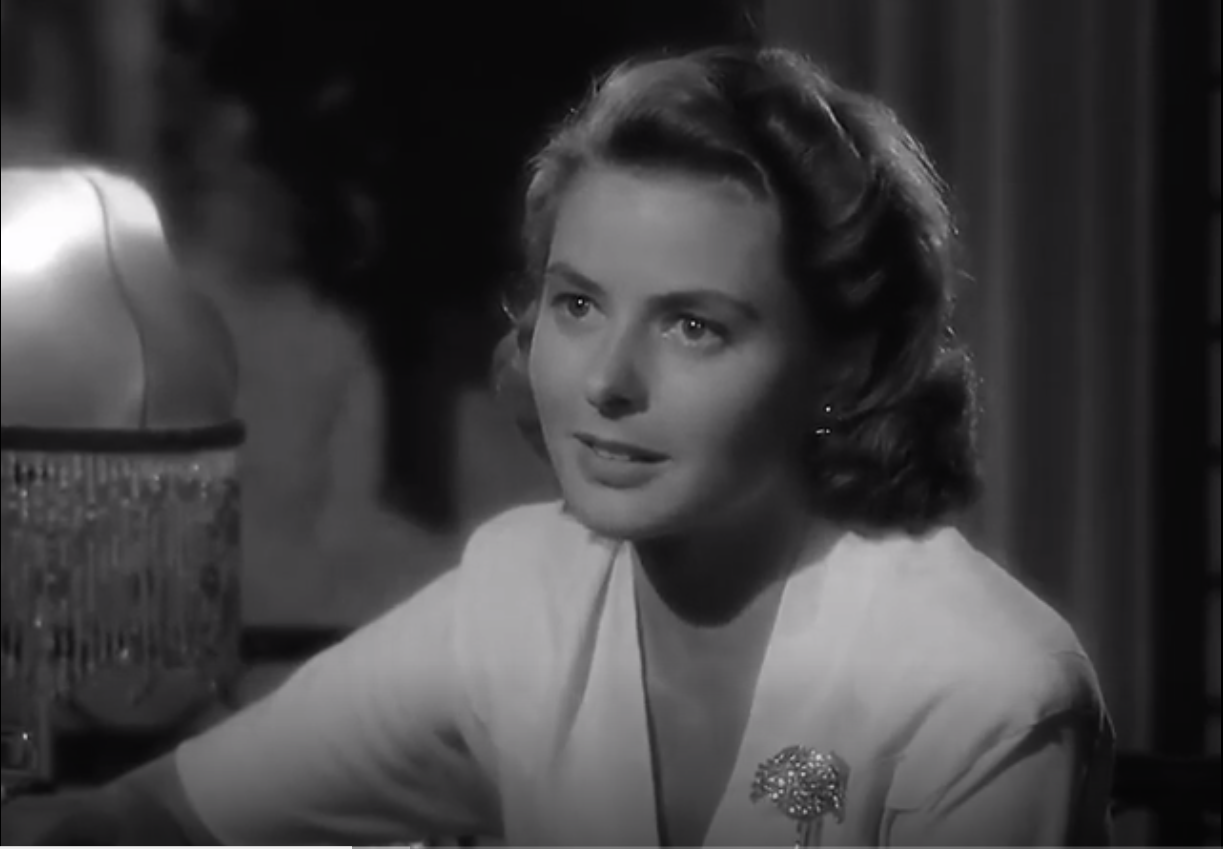
Image 4
(Casablanca, 1942, 40:43)
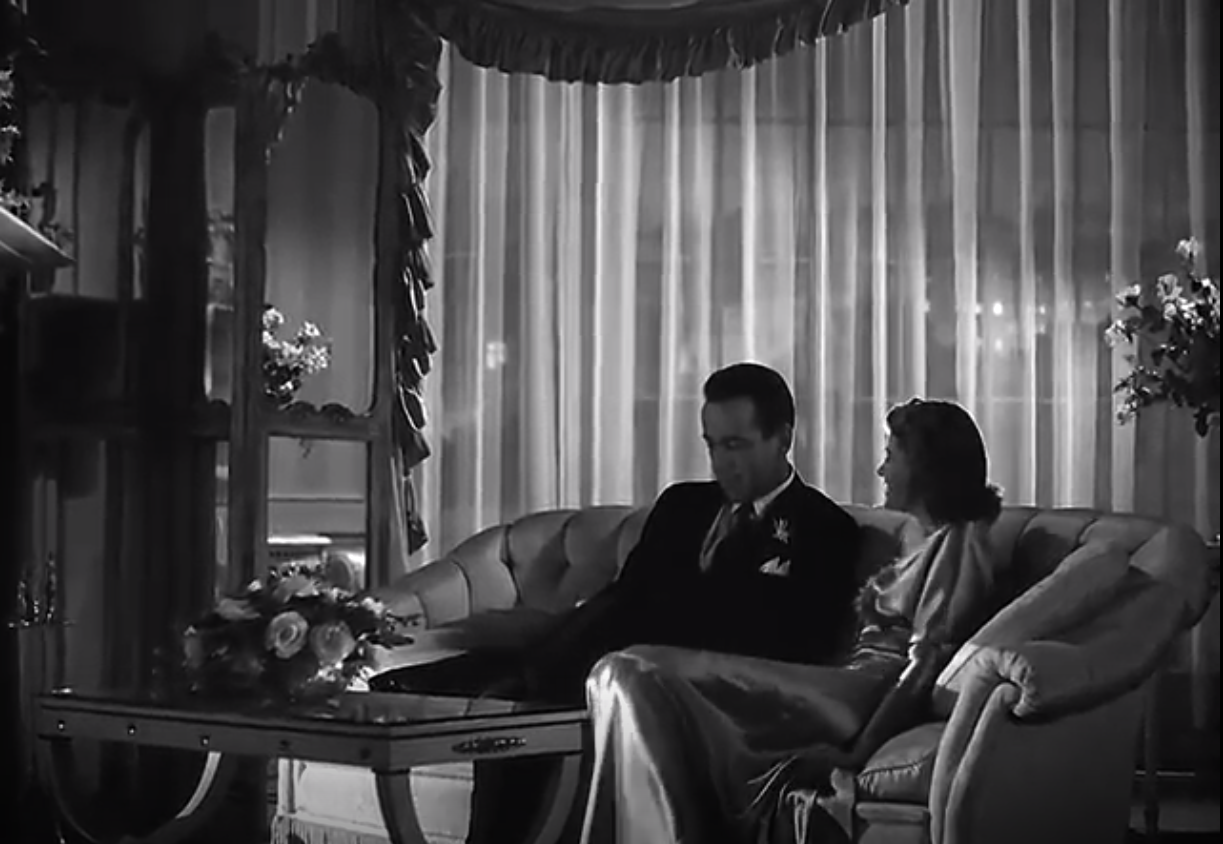
Image 5
(Casablanca, 1942, 37:36)
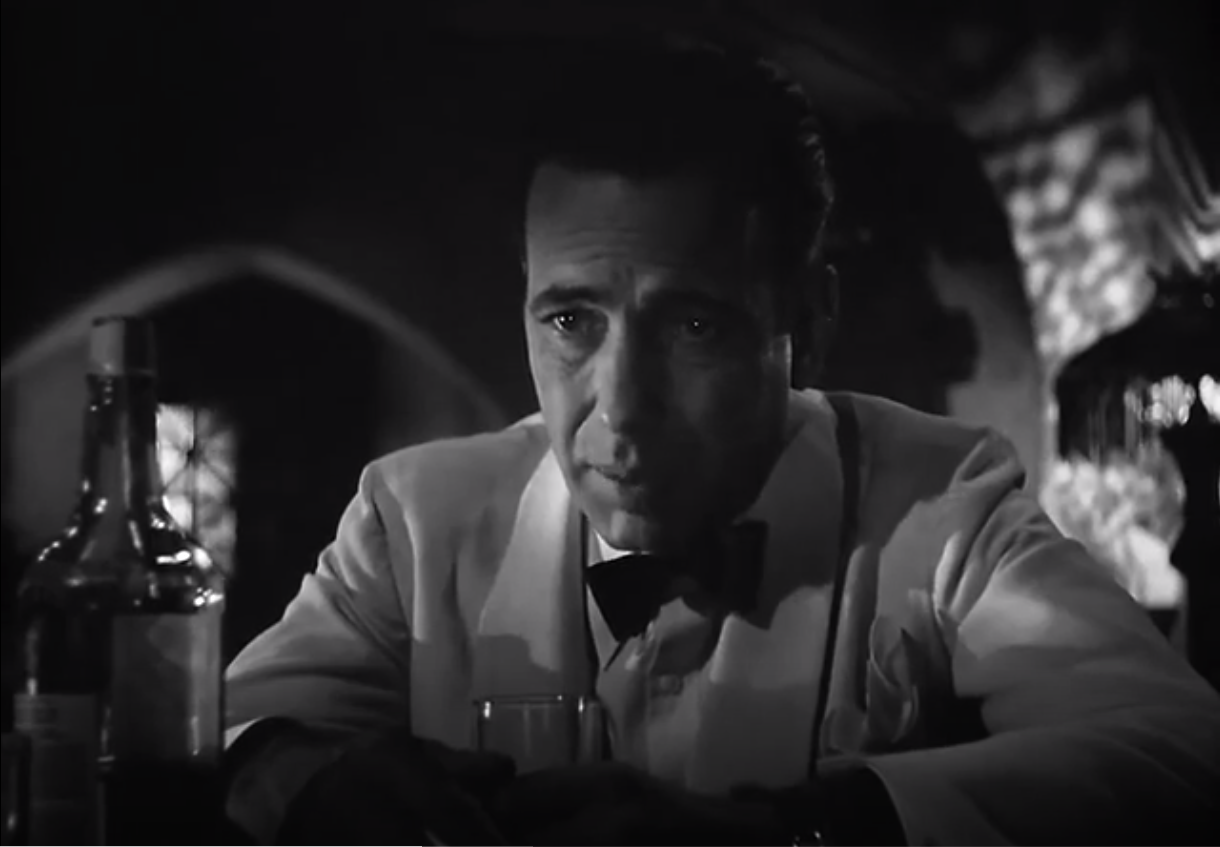
Image 6
(Casablanca, 1942, 47:19)
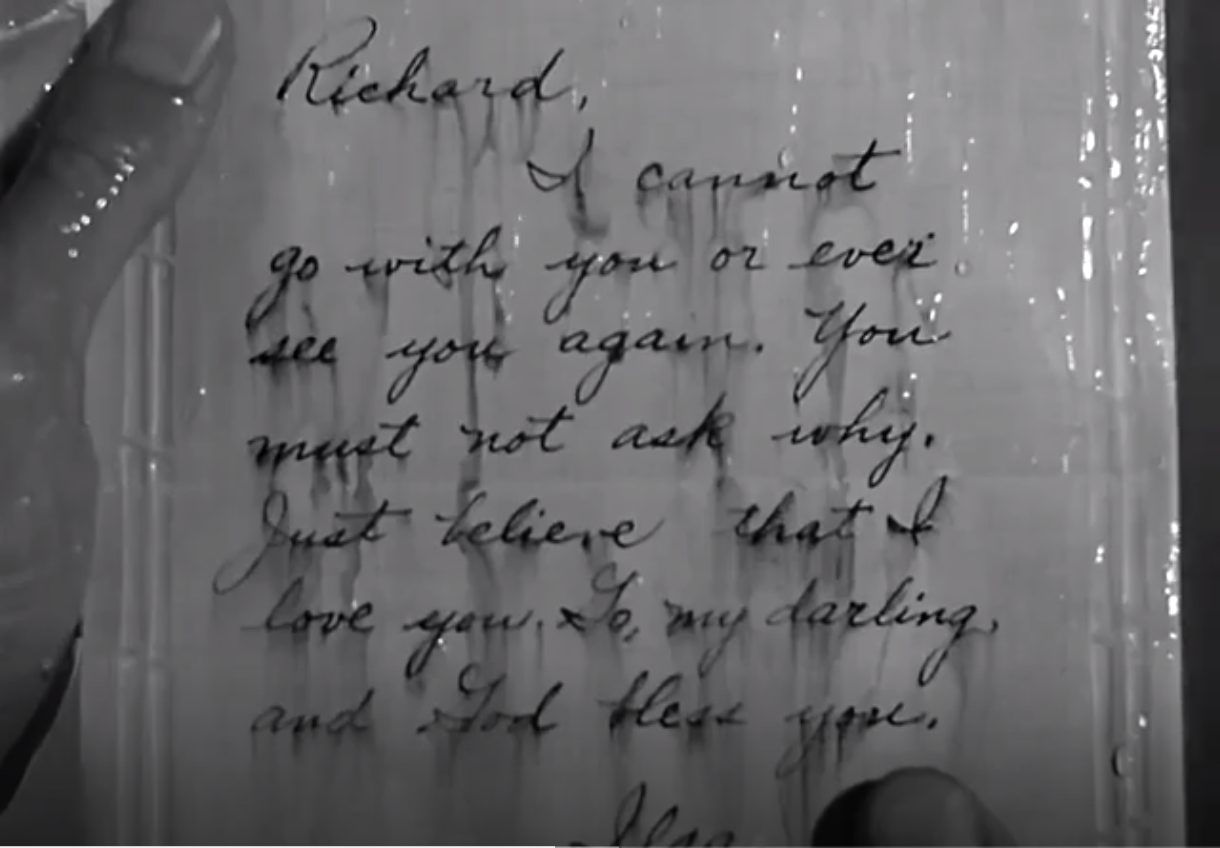
Image 7
(Casablanca, 1942, 03:28)

Image 8
(Casablanca, 1942, 48:09)

Image 9
(Casablanca, 1942, 48:20)
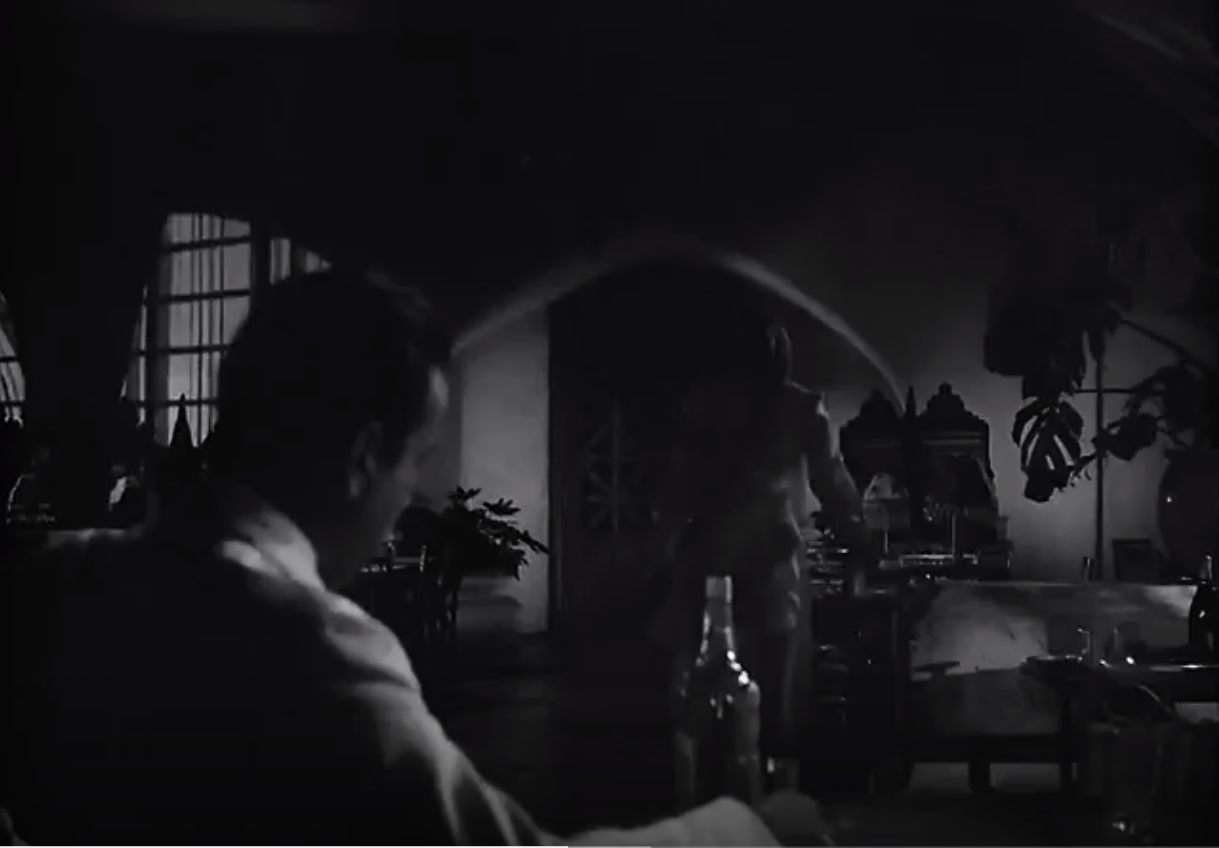
Image 10
(Casablanca, 1942, 1:13:34)
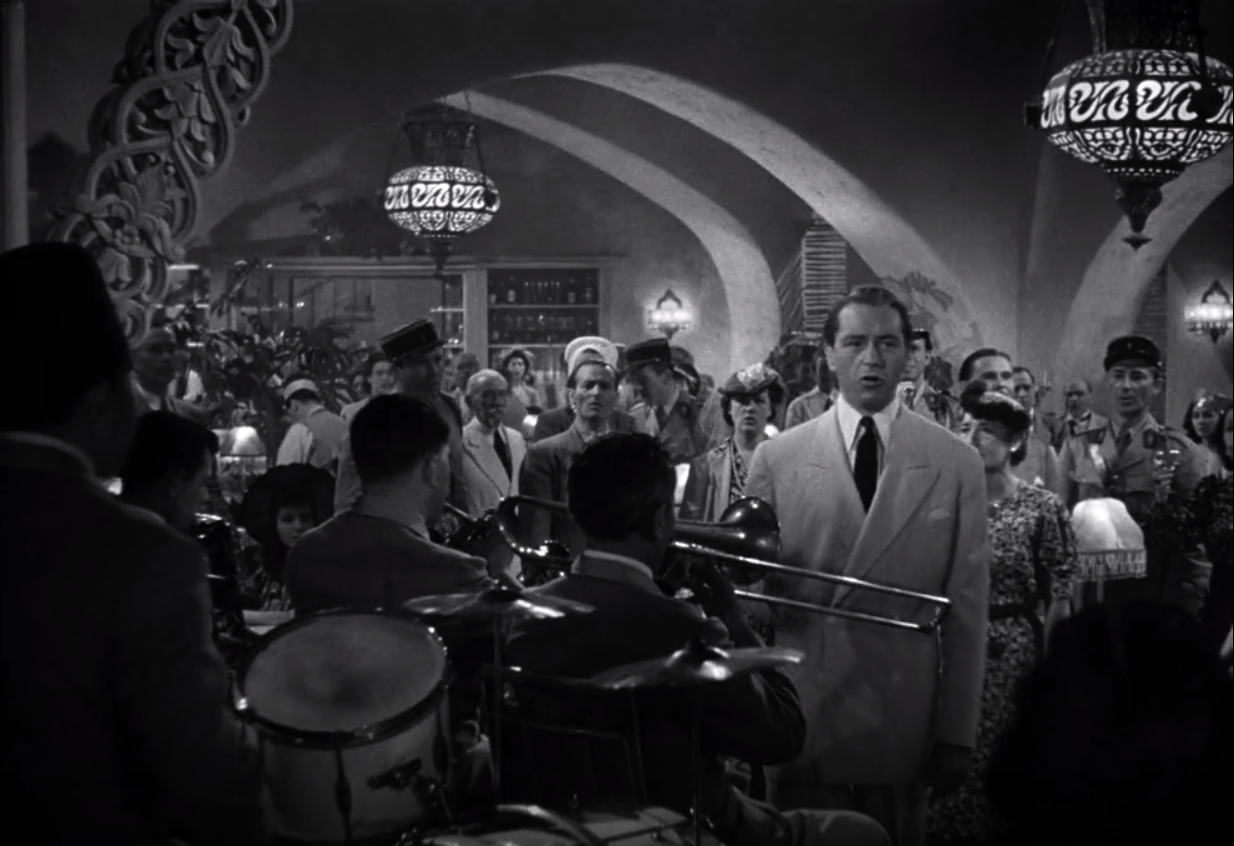
Bibliography
- Casablanca. Directed by Michael Curtiz. By Julius J. Epstein, Philip G. Epstein, Howard Koch, Max Steiner, Arthur Edeson, and Owen Marks. Produced by Hal B. Wallis. Performed by Humphrey Bogart, Ingrid Bergman, Paul Henreid, Claude Rains, Conrad Veidt, Sydney Greenstreet, and Peter Lorre.
- Barson, Michael. “Michael Curtiz.” Encyclopædia Britannica, Encyclopædia Britannica, Inc., 3 Apr. 2018, www.britannica.com/biography/Michael-Curtiz.
- Britannica, The Editors of Encyclopaedia. “Casablanca.” Encyclopædia Britannica, Encyclopædia Britannica, Inc., 18 May 2018, www.britannica.com/place/Casablanca-Morocco.
- Dirks, Tim. “Casablanca (1942).” Casablanca (1942), AMC Network Entertainment LLC, 2010, www.filmsite.org/casa.html.
- Isenberg, Noah William. We’ll Always Have Casablanca: the Life, Legend, and Afterlife of Hollywood’s Most Beloved Movie. W. W. Norton & Company, 2018.
- Monaco, James. How to Read a Film: Movies, Media, and Beyond: Art, Technology, Language, History, Theory. New York: Oxford Univ. Press, 2009.
[1] Britannica, The Editors of Encyclopaedia. “Casablanca.” Encyclopædia Britannica, Encyclopædia Britannica, Inc., 18 May 2018, www.britannica.com/place/Casablanca-Morocco.
[2] Dirks, Tim. “Casablanca (1942).” Casablanca (1942), AMC Network Entertainment LLC, 2010, www.filmsite.org/casa.html.
[3] Dirks, Tim. “Casablanca (1942).” Casablanca (1942), AMC Network Entertainment LLC, 2010, www.filmsite.org/casa.html.
[4] Barson, Michael. “Michael Curtiz.” Encyclopædia Britannica, Encyclopædia Britannica, Inc., 3 Apr. 2018, www.britannica.com/biography/Michael-Curtiz.
[5] Monaco, James. How to Read a Film: Movies, Media, and Beyond: Art, Technology, Language, History, Theory. New York: Oxford Univ. Press, 2009, 125-126.
[6] Refer to Image 1 in Appendix
[7] Isenberg, Noah William. We’ll Always Have Casablanca: the Life, Legend, and Afterlife of Hollywood’s Most Beloved Movie. W. W. Norton & Company, 2018, 112.
[8] Refer to Image 10 in Appendix
[9] Refer to Image 3 in Appendix
[10] Refer to Image 4 in Appendix
[11] Refer to Image 5 in Appendix
[12] Monaco, James. How to Read a Film: Movies, Media, and Beyond: Art, Technology, Language, History, Theory. New York: Oxford Univ. Press, 2009, 206.
[13] Refer to Image 2 in Appendix
[14] Refer to Image 8 in Appendix
[15] Refer to Image 9 in Appendix
Cite This Work
To export a reference to this article please select a referencing stye below:
Related Services
View allDMCA / Removal Request
If you are the original writer of this essay and no longer wish to have your work published on UKEssays.com then please click the following link to email our support team::
Request essay removal


